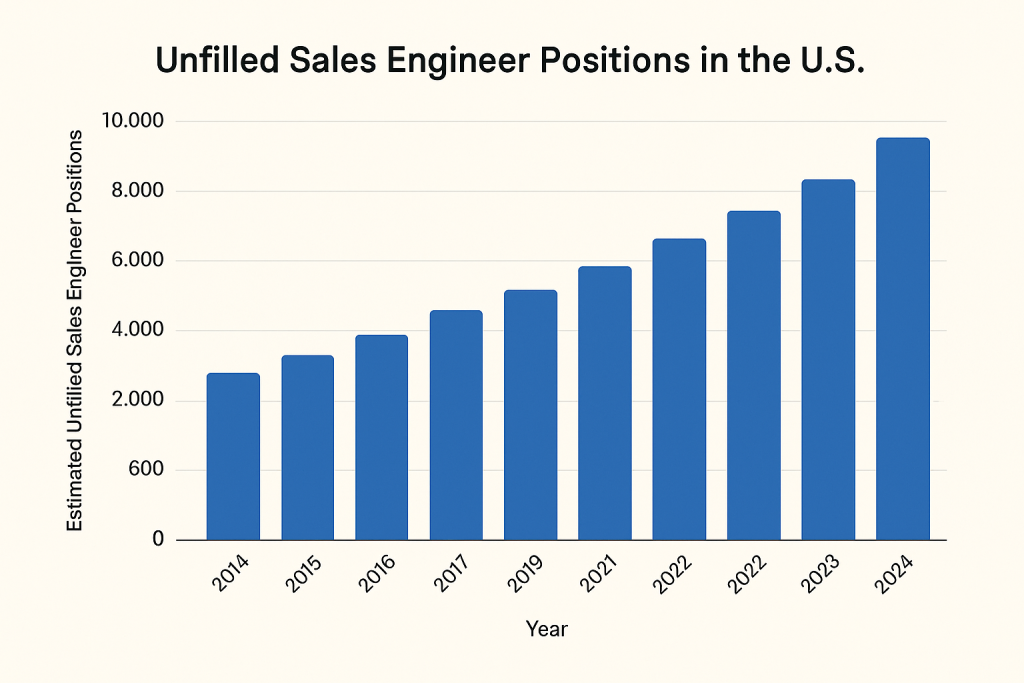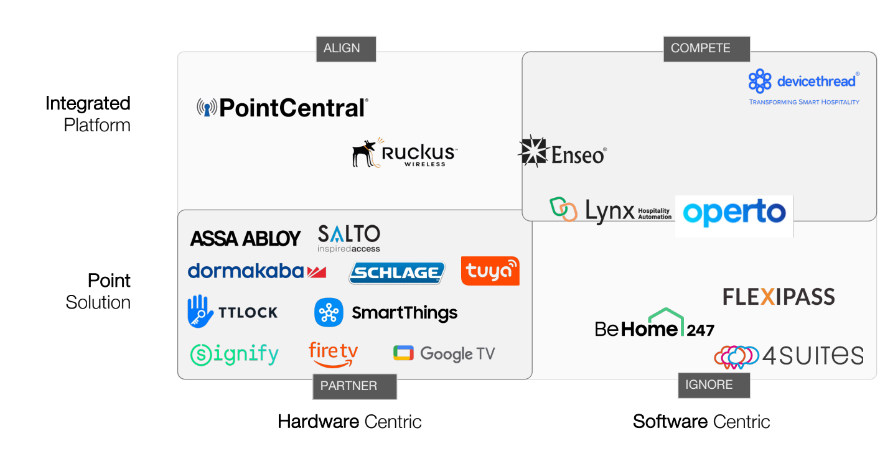Navigating a Perfect Storm of Complexity and Scarcity
Picture this: A Fortune 500 manufacturer needs a specialized semiconductor for their next-generation product. The technical requirements are complex, the timeline is tight, and the stakes couldn’t be higher. Standing between a handshake and a $1 million contract is a single sales engineer—tasked with translating intricate technical specifications into business value in real-time.
This scenario plays out thousands of times daily across the $891 billion electronics industry, projected to breach the trillion-dollar mark by 2024. Yet here’s the paradox: as the industry explodes with opportunity, the people who make these critical deals happen are becoming an endangered species.
Sales engineers are the heroes of tech commerce—part technical wizard, part business translator, navigating labyrinths of product catalogs containing hundreds of thousands of SKUs and bridging the gap between what’s possible and what customers actually need. But with engineering enrollment declining and demand soaring, we’re facing a shortage of up to 146,000 skilled sales engineers by 2029.

The result? Million-dollar deals that should close in weeks now drag on for months. Critical technical knowledge gets trapped in silos. And in an industry where precision matters, even the smallest miscommunication can derail everything.
The Perfect Storm of Challenges
This talent crisis sits at the center of multiple converging problems that are crippling the industry’s sales efficiency:
The talent pipeline is broken. Engineering enrollment has dropped 13% globally over the past decade, while demographic shifts and retirements accelerate the exodus of experienced professionals. The gap between industry needs and workforce capabilities continues to widen.
Sales processes have become painfully inefficient. Technical solutioning often takes weeks, with deals averaging 12+ weeks to close. Subject matter experts spend their time answering repetitive queries instead of strategic work, leaving long-tail customers underserved and deals vulnerable to competitors.
Knowledge fragmentation creates constant friction. Critical technical information lives scattered across SharePoint sites, databases, personal notes, and spreadsheets. Sales engineers waste precious time hunting for answers while customers wait, turning what should be fluid conversations into frustrating back-and-forth exchanges.
Current tools miss the mark entirely. Traditional sales enablement platforms like Seismic and Highspot function as glorified content repositories, lacking the technical granularity these complex sales require. Generic AI produces unreliable “hallucinations” when faced with nuanced technical queries, creating a narrow, lossy communication channel that delivers only a fraction of available knowledge to buyers.
What Needs to Change: A New Paradigm for Technical Sales
The status quo is unsustainable. The electronics industry urgently needs a paradigm shift in how technical sales are approached and executed. There’s a clear need to:
- Empower Sales Teams: Equip non-technical sales personnel with the tools to confidently and accurately address technical inquiries, bridging the gap left by the shrinking pool of SEs.
- Accelerate Sales Cycles: Drastically reduce the time it takes to move from initial contact to deal closure, unlocking revenue and improving customer satisfaction.
- Democratize Expertise: Provide real-time, contextualized access to siloed expert knowledge, ensuring that every customer interaction is informed and effective. As one large electronics buyer told a Rapidflare customer, “If you don’t have AI-assisted tools, we can’t buy your products going forward”.
- Move Beyond Static Content: Transition from passive content repositories and generic AI to dynamic, industry-specific intelligence platforms that provide actionable outputs and facilitate genuine buyer-seller dialogue. The goal is to create “rep free delightful sales conversation where customers can engage in dynamic real-time dialog”.
The Ideal Solution: Unlocking Expertise with Advanced AI
In an era defined by AI’s rapid advancements and sophisticated LLMs, the ideal sales enablement solution looks more like a technical co-pilot. Such a system would leverage proprietary customer data to provide precise, contextual answers to complex inquiries in real-time. Crucially, it would overcome AI “hallucinations” by grounding responses in verified knowledge, automating high-value tasks like proposal generation, and seamlessly integrating into existing workflows. This enables non-technical sales personnel to confidently handle complex client discussions, effectively bridging the knowledge gap and freeing human experts for strategic engagement.
Rapidflare: Intelligent Sales, Expertly Delivered
Addressing these deep-seated industry challenges requires a special blend of insight and innovation. We found that in Rapidflare. They are transforming how technical B2B sales happen in electronics by essentially giving sales teams an AI-powered “virtual sales engineer.” This isn’t just about incremental improvements; it’s about fundamentally changing the speed and efficiency of the sales process. Imagine shrinking a complex, two-week technical solutioning process down to just five minutes – that’s the kind of impact Rapidflare is delivering for its customers.
Team
The power behind this comes from a team that has lived and breathed the electronics industry. The founders – Navanee Sundaramoorthy, John Williams, Prush Palanichamy, and Vasanth Asokan – are not new to this world. With over 80 years of collective experience at tech giants like Xilinx, AMD, and Netflix, and with successful prior entrepreneurial ventures (including an acquisition sale of Uncanny Vision to Eagle Eye Networks co-founded by Navanee ), they possess an intimate understanding of the bottlenecks they’re eliminating. They’ve even all worked together before, creating a well-oiled machine for execution.
Approach
Their approach is sophisticated yet practical. Rapidflare intelligently ingests a company’s vast trove of technical documentation into proprietary knowledge graphs. This allows their advanced AI, built on an Agentic RAG framework, to provide remarkably accurate and contextual answers to complex technical queries – a crucial factor when dealing with high-stakes enterprise sales. One customer, AMD, was particularly impressed by an 80-85% accuracy rate during a proof-of-concept, leading to strong internal adoption. It’s clear this is far more than a generic AI wrapper; it’s a purpose-built engine for technical clarity.
Market Access and Growth
The market has been quick to recognize the value. Since their start in January 2024, Rapidflare has already secured ~$376,000 in live and contracted ARR from major players like AMD, Avnet, Eagle Eye Networks, and Brivo, among others. Customers are not only signing up but also significantly expanding their usage. Eagle Eye Networks, for example, grew their ACV from $12K to $60K, and Brivo is on a similar path, moving from $12K to $30K ACV and set to reach $60K in Q2 next year. Portal.io now uses Rapidflare to help generate up to 9,000 accepted proposals a month. This rapid adoption and expansion underscore the tangible ROI and the team’s ability to deliver a solution that directly addresses a pressing need, especially as major buyers now expect AI-assisted tools from their suppliers.












